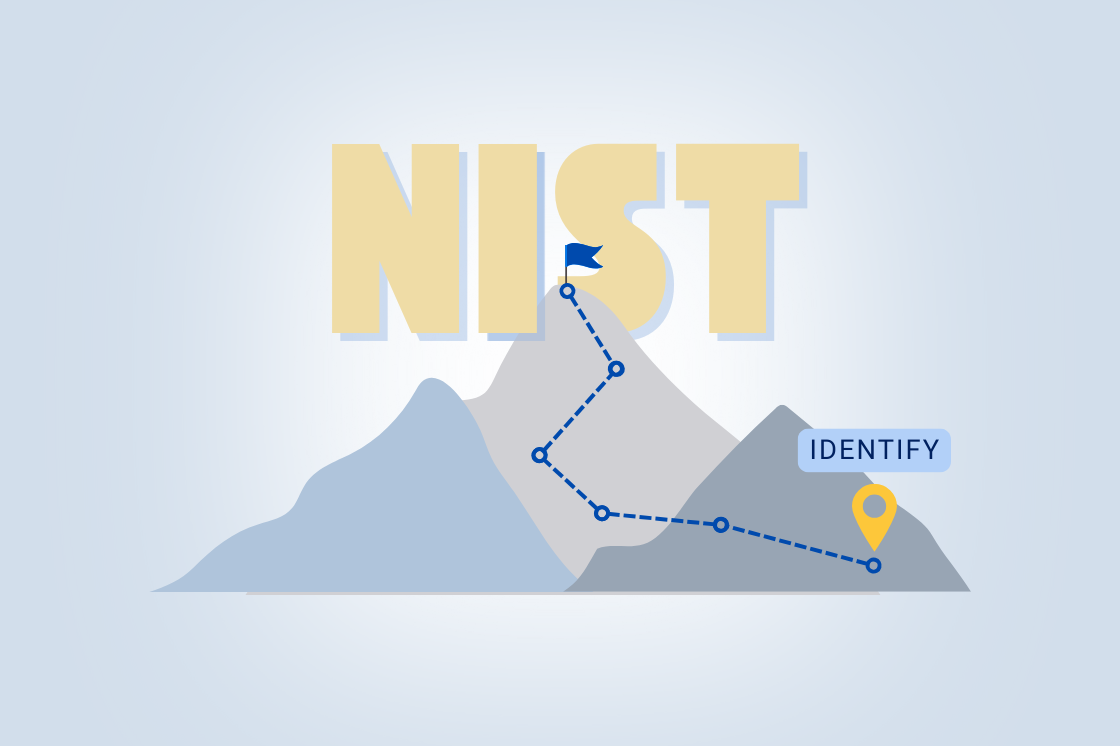The Benefits of Having a Strong Foundation of ITSM Processes
IT innovation is more than having the latest technology. It's about effectively managing that technology to deliver customer value and achieve business goals. That's why you need a solid base of ITSM processes.
In this post we will be discussing the 5 most critical ITSM processes, but first, some backgroud.
I still remember attending my first IT Change Management process meeting. It was called the CAB - Change Advisory Board meeting.
It was the spring of 1980, and I had just started working in IT. I was working for a major computer manufacturer as a field engineer. We attended the meeting to discuss the details of a major upgrade scheduled for later in the month.
The system supported TRACKS, tracking freight cars for one of the world's largest rail companies.
If TRACKS went down the trains came to a halt.
So, what does a meeting that happened over 40 years ago have to do with managing a modern IT organization?
That meeting was my first introduction to the importance of ITSM processes and left a lasting impression on me. It taught me the value of meticulous planning, collaboration, and accountability in ensuring the smooth functioning of IT services.
While technology has evolved significantly since then, the core principles of effective ITSM remain the same. Managing a modern IT organization requires a strategic approach encompassing the latest technology and the processes and frameworks that support its implementation and maintenance.
That meeting in 1980 highlighted the criticality of change management in the IT landscape. It emphasized the need for careful planning, risk assessment, and stakeholder coordination when implementing significant upgrades or changes to IT systems. These principles still hold today as organizations strive to minimize disruptions, optimize resource allocation, and ensure seamless transitions in the face of technological advancements.
But it didn't stop with change management. Our company's incident and problem management processes were very mature and allowed us to monitor trends and identify issues before they negatively impacted our customers.
That's when the light bulb went on for me. Having robust processes is a critical part of any IT organization.
This early experience dramatically impacted me and led me into an ITSM process design, implementation, and improvement career.
ITSM Principles
ITSM, which stands for IT Service Management, is a set of practices and strategies that enable organizations to effectively manage their IT services and align them with business objectives. It encompasses many activities, including incident management, change management, problem management, configuration management, and release management.
By implementing ITSM processes, companies can ensure that their IT services are delivered efficiently, consistently, and focused on providing value to customers. ITSM helps organizations streamline their IT operations, improve service quality, and minimize downtime by establishing standardized procedures and workflows.
The IT landscape is evolving rapidly, and ITSM is more important than ever. As businesses increasingly rely on technology to drive innovation and maintain a competitive edge, it becomes crucial to have solid ITSM processes in place. These processes enable organizations to effectively manage the complexities and challenges associated with deploying and maintaining IT infrastructure, applications, and services.
ITSM is not just about implementing the latest technology; it's about managing it to align with business goals and deliver value to customers.
Companies that practice ITSM deliver services more efficiently, resolve incidents faster, implement changes smoother, identify problems quicker, more accurately track configurations, and plan and execute releases with fewer issues.
Want to learn more about ITSM? Read our article "What is IT Service Management? A Complete Guide."
What Are the 5 Key ITSM Processes?
In a world where ITIL has defined 34 IT processes, it can be overwhelming to determine which ones are the most critical for your organization.
Sure, they all play an essential role in managing an IT organization, but you must start somewhere.
We have a saying here at Navvia: "You can't boil the ocean."
We've been helping organizations implement ITSM processes for over 30 years, initially as a consulting company and, more recently, with our Navvia Process Designer.
Our experience has taught us that you must build a solid ITSM foundation.
Five ITSM processes are essential for any company, and you need to get these right before moving on to more advanced processes. They str typically the first five processes implemented in a company's ITSM tools.
For example, you can only effectively manage service levels if you measure incidents, problems, and changes.
And with cybersecurity at the top of most peoples mind, having a foundation of ITSM processes is critical for maintaining a robust security posture.
So what are the five most critical ITSM processes?
I'm sure I'll get a lot of pushback on this list. And of course, a lot will depend on your point of view. You may be biased toward your processes if you are the Disaster Recovery manager or the company's CISO (Chief Information Security Officer).
But after reading my list, ask yourself, can you effectively do your job without the following processes?
So here goes nothing!
The following processes are the most foundational for any IT organization; Incident Management, Change Management, Problem Management, Configuration Management, and Release Management.
Let's take a look at each of these processes in a bit more detail.
Incident Management
This process focuses on quickly and efficiently resolving any possible IT incidents. It ensures a rapid response to disruptions, minimizing downtime and its impact on business operations. Incident management also involves proper documentation and communication to keep stakeholders informed throughout the resolution process.
Change Management
Organizations must change their IT infrastructure and services as technology evolves and business needs change. Change management ensures these changes are planned, communicated, and implemented smoothly to minimize risks and avoid negative impacts on IT service delivery. It involves assessing the potential impact of changes, obtaining necessary approvals, and coordinating with different stakeholders to ensure a successful transition.
Problem Management
While incident management focuses on resolving individual issues, problem management aims to identify and address the root causes of recurring incidents or problems. It involves analyzing trends, conducting investigations, and implementing long-term solutions to prevent future incidents. By addressing underlying problems, organizations can improve IT service reliability and reduce the likelihood of recurring disruptions.
Configuration Management
IT infrastructure and services can be complex, with numerous components and dependencies. Configuration management involves accurately documenting and managing these configurations to ensure a clear understanding of the IT environment. It includes maintaining a configuration management database (CMDB) that contains information about all configuration items, their relationships, and their attributes. Proper configuration management enables organizations to effectively manage changes, identify potential impacts, and troubleshoot issues more efficiently. Learn more by reading The four Reasons CMDB Initiatives Fail.
Release Management
Organizations are constantly implementing new software or updating existing applications. Release management ensures these changes are properly planned, tested, and implemented. It involves coordinating the release process, managing dependencies, and communicating with stakeholders to minimize disruptions and ensure a smooth transition. Effective release management reduces the risk of failed deployments, improves service quality, and enhances the overall customer experience.
Why are these ITSM processes the most critical?
It's no coincidence that these five processes were part of the initial ITIL framework released in 2000 to improve the quality of IT services in the British government.
But I didn't pick them because there were "ITIL."
Even today, when you look at most ITSM tool implementations, such as Servicenow, these are the processes people start with!
Unfortunately - many organizations failed to implement these processes correctly, and the resulting technical debt has made it extremely difficult, if not impossible, to implement more advanced processes.
ITSM Foundational Processes - The Benefits
Implementing foundational ITSM processes such as Incident Management, Change Management, Problem Management, Configuration Management, and Release Management brings a multitude of benefits to organizations.
These processes ensure quick and efficient resolution of IT incidents, smooth management of changes, identification and resolution of root causes of recurring problems, accurate documentation and management of IT configurations, and proper planning and implementation of software releases.
By focusing on these critical processes, companies can minimize downtime, reduce risks, improve service quality, enhance customer experience, and streamline their IT operations.
Learn more about The Strategic Benefits of Implementing ITSM Processes.
ITSM Foundational Processes and IT Security
Implementing a foundation of IT Service Management (ITSM) processes such as Incident, Problem, Change, Release, and Configuration management provides significant IT security benefits. They are also foundational to your ITSM Information Security and Risk Management processes and are a key part of implementing an Information Security Management System (ISMS).
- Incident Management is crucial in swiftly identifying and mitigating security breaches or anomalies. By having a structured process in place, organizations can reduce the impact of security incidents, ensure a quicker response time, minimize potential damage or loss of data, and limit downtime.
- Problem Management complements Incident Management by identifying and rectifying the root causes of security incidents. By analyzing incident patterns, organizations can implement lasting solutions that prevent security vulnerabilities from resurfacing.
- Change Management ensures that any alterations to the IT environment are assessed for potential security risks before implementation. This process reduces the likelihood of introducing new vulnerabilities.
- Release Management supports IT security by ensuring that new software, systems, or updates are thoroughly tested, verified, and secure from vulnerabilities before deployment.
- Configuration Management maintains an accurate record of all IT assets and configurations, providing essential visibility. This helps in identifying unauthorized changes, sets standards for hardened baseline configurations, and ensures that security patches are applied consistently and promptly.
Read our blog on Boosting Cyber Resilience with IT Security Assessments and ITSM Processes and Building an IT Security Management Process for more information on IT security.
Next Steps
So how does one go about building a strong ITSM foundation? Over the next few weeks, I will release a series of articles; each focused on one of the core processes. These articles will include sample processes, roles and responsibilities, and other tips and tricks based on our experience.
I'll top it all off with an article on an overall implementation approach.
Sign up for our blog (below) to get notifications when these articles are released.
By prioritizing these five critical ITSM processes, organizations can improve service delivery, reduce downtime, improve security, and provide greater value to customers.


